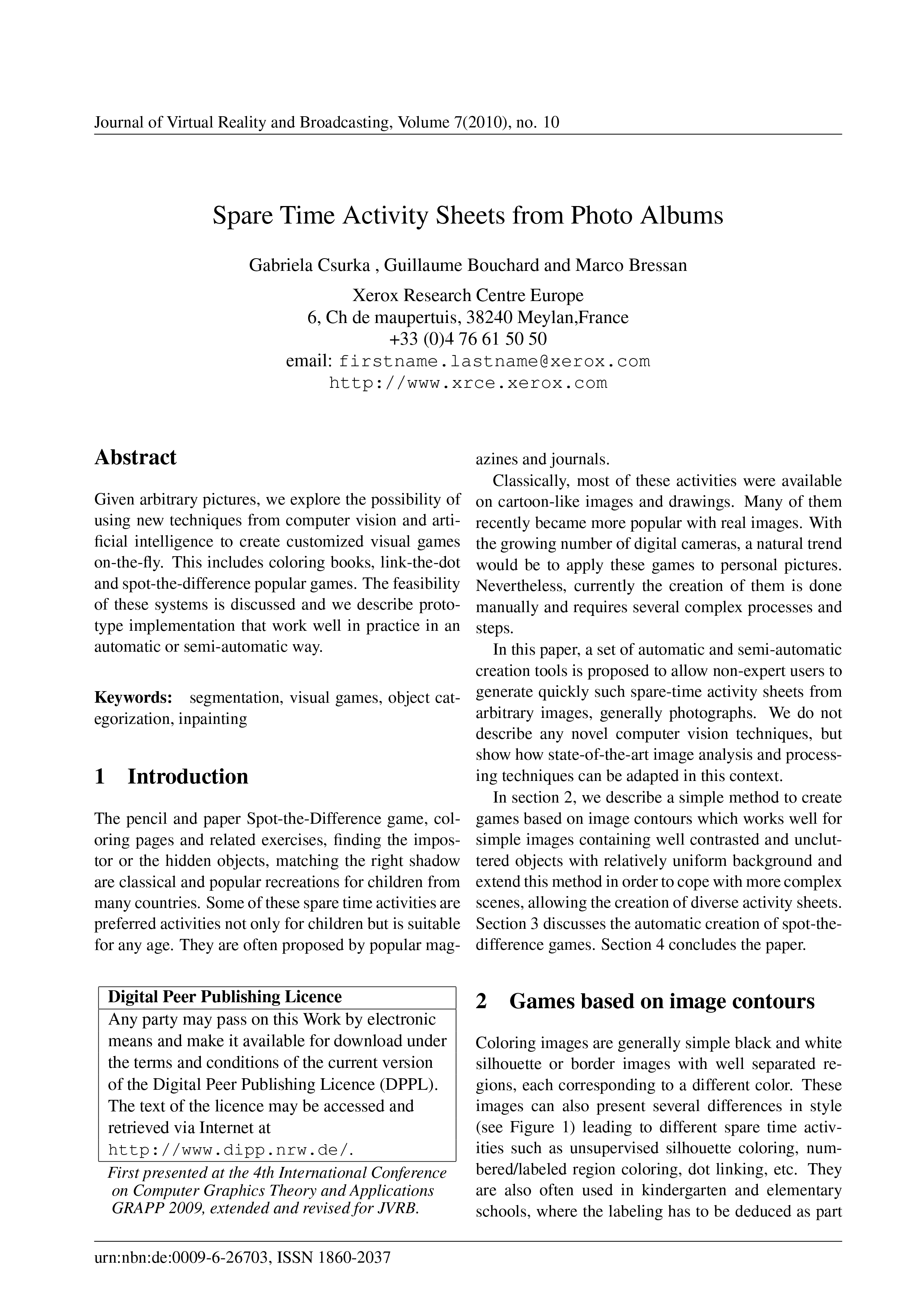Spare Time Activity Sheets from Photo Albums
DOI:
https://doi.org/10.20385/1860-2037/7.2010.10Keywords:
Inpainting, Object Categorization, Segmentation, Visual GamesAbstract
Given arbitrary pictures, we explore the possibility of using new techniques from computer vision and artificial intelligence to create customized visual games on-the-fly. This includes coloring books, link-the-dot and spot-the-difference popular games. The feasibility of these systems is discussed and we describe prototype implementation that work well in practice in an automatic or semi-automatic way.
Published
2010-10-27
Issue
Section
GRAPP 2009





